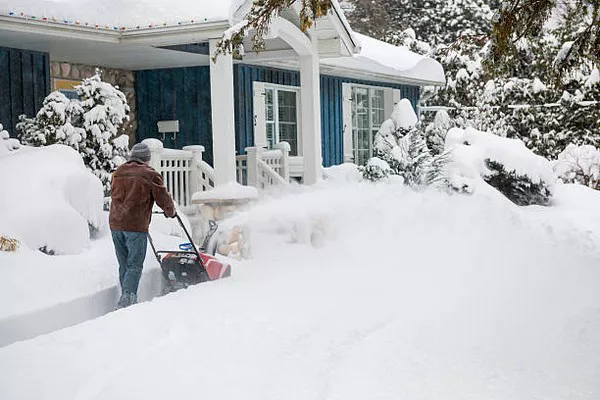Snowblowers are essential tools for clearing snow efficiently during the winter months, but can they effectively tackle slush? Slush, a mixture of snow and water, can present unique challenges for snow removal equipment. In this article, we delve into the capabilities of snowblowers in handling slush, examining their efficiency and discussing best practices for optimal performance.
Understanding Slush:
Before delving into the capabilities of snowblowers, it’s crucial to understand the nature of slush. Slush forms when snow melts partially, either due to temperature fluctuations or other factors like foot traffic or vehicle movement. This partially melted snow combines with water, creating a heavy and often challenging mixture to clear.
Challenges of Clearing Slush:
Clearing slush presents several challenges compared to dry, powdery snow. Slush is heavier and more compact, making it harder to move and requiring more power from snow removal equipment. Additionally, slush tends to stick to surfaces, creating a layer of ice if left untreated, further complicating the clearing process.
Can Snowblowers Handle Slush?
The effectiveness of snowblowers in clearing slush depends on various factors, including the type of snowblower, the amount of slush, and environmental conditions. While traditional single-stage snowblowers may struggle with slush due to their design, two-stage snowblowers are generally more capable.
Two-stage snowblowers feature an auger to break up snow and ice before feeding it into a high-speed impeller, which then throws the mixture out of the chute. This dual-stage process provides greater power and efficiency, making two-stage snowblowers better equipped to handle slush compared to their single-stage counterparts.
However, even two-stage snowblowers may encounter challenges when dealing with heavy or icy slush. In such cases, it’s essential to take certain precautions and adopt specific techniques to maximize efficiency.
Best Practices for Clearing Slush with Snowblowers:
Adjusting the Height: When clearing slush, adjust the height of the snowblower to ensure optimal performance. Lower the housing to allow the auger to make better contact with the slush while avoiding contact with the ground to prevent damage.
Slower Speed: Slush requires more power to clear effectively, so slow down the speed of the snowblower to provide sufficient time for the auger and impeller to break up and discharge the slush.
Maintenance: Regular maintenance of the snowblower is crucial for optimal performance, especially when dealing with challenging conditions like slush. Keep the auger and impeller clear of debris and inspect for any signs of wear or damage.
Use a Slush Guard: Some snowblowers come with optional slush guards or drift cutters that help contain and guide slush into the auger for efficient clearing. Consider using these attachments if available for your snowblower model.
Clearing in Layers: When faced with heavy slush, it may be more effective to clear it in layers rather than attempting to clear it all at once. Clearing in layers allows the snowblower to work more efficiently, reducing strain on the machine and improving overall performance.
Pre-treating Surfaces: To prevent slush from freezing into ice, consider pre-treating surfaces with salt or ice melt before using the snowblower. This helps to loosen the slush and makes it easier to clear.
Safety Precautions: When operating a snowblower, especially in challenging conditions like slush, always prioritize safety. Wear appropriate protective gear, keep hands and feet away from moving parts, and be mindful of slippery surfaces.
See Also How Deep Does The Snow Have To Be To Use A Snowblower?
Conclusion:
While snowblowers are effective tools for clearing snow, their efficiency in handling slush depends on various factors, including the type of snowblower and environmental conditions. Two-stage snowblowers are generally better equipped to handle slush compared to single-stage models, but specific techniques and precautions are necessary for optimal performance.
By adjusting the height, speed, and maintenance of the snowblower, along with employing best practices such as using slush guards and clearing in layers, users can effectively tackle slush and maintain clear pathways during winter months. However, always prioritize safety when operating snow removal equipment in challenging conditions.

